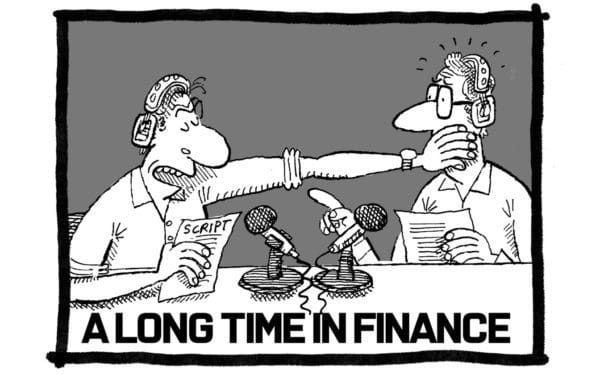A personal view from Ian Stewart, Deloitte’s Chief Economist in the UK. Subscribe to & view previous editions at: http://blogs.deloitte.co.uk/
The changing size of the state tells the story of modern nations and the ideas that shape them.
Until the late nineteenth century the civilian state scarcely existed. In 1692, when comprehensive records for what was to become the UK started, civil spending by government came to a modern equivalent of around £90 million. A country that was about to acquire a vast empire was governed with a budget equivalent to that of today’s Food Standards Agency.
For most of the last three hundred years, waging war was the main item of spending for government. Public spending and borrowing fluctuated in line with the wars Britain fought, becoming progressively more costly with the mobilisation of whole societies in the twentieth century.
The Napoleonic Wars started in 1798 and were the most costly of any before the twentieth century, briefly pushing government spending as a share of GDP from single digits to 20%. The First and Second World Wars were all-encompassing and, for the duration, were the principle business of Western economies. In the UK, government spending ended up accounting for nearly 60% of GDP in each conflict.
Until the mid-nineteenth century most government revenues came from purchase and customs taxes levied on a wide range of items including wool, coal, windows and land. Income tax was introduced as a temporary expedient, at low rates, in 1798, to fund the war with France. With neither the infrastructure of modern taxation nor the public acceptance of high taxes, the UK government relied more on debt to finance the Napoleonic Wars than in the First or the Second Wars.
Thus, the burden of UK public debt as a share of GDP peaked at far higher levels after the Napoleonic Wars than in the wake of the First or the Second World Wars.
Waging war inflicts far more damage on a nation’s finances than countering a deep recession. The UK’s debt-to-GDP ratio has risen in the wake of the financial crisis and stands at 87% today, up from 41% in 2006, but still a fraction of its post-war highs.
Outside of wars government spending in the UK in the last hundred years has been dominated by the growth of civil spending on schooling, health and welfare. Behind this lies a revolution in ideas associated with the rise of the labour movement, the extension of the franchise and the prosperity and social ills wrought by the Industrial Revolution.
In Britain the civil state started its great expansion in the Edwardian period and saw its apotheosis in creation of the welfare state between 1945 and 1951.
When the state was small the ups and downs of the economic cycle and financial crises had little effect on the public finances. The South Sea Bubble in 1720 and the Railway Mania crashes of the mid-nineteenth century had no impact on public borrowing.
A permanently expanded role for the state has made public spending, revenues and borrowing more dependent on the economic cycle. The work of the British economist, John Maynard Keynes, in the 1930s, entrenched the idea that government should counter recessions through borrowing and spending more. In the last 70 years recessions, rather than wars, have tended to be the main driver of borrowing with deficits increasingly common.
Yet over time, public debt levels have come down in the wake of war and recession. History is encouraging in this respect. It took 80 years, but by the early 1990s the ratio of public debt to GDP in the UK was down to levels last seen on the eve of the First World War. Those who worry about the current level of indebtedness of the UK government might take some comfort from the fact that the UK ran far higher levels of debt through much of the last three centuries.
So historically public debt comes down. The real question is who pays to reduce it?
The extreme option is for a government to default on its debt, so the lender foots the bill. This, of course, has much wider consequences, undermining economic stability and confidence in the rule of law as well reducing the ability of the government to borrow in the future. Governments that have a history of defaulting on their debts pay more to borrow than those that don’t.
In practice it has tended to be a combination of the public and bond holders who bear the cost of reducing debt levels. The public pays more taxes and they may get fewer public services. Bondholders can lose out through higher inflation, which reduces the real value of the debt they have bought from the government. That’s good for the government, because it reduces the burden of debt, but pretty dire if you’ve lent money to the government (though not as bad as the government defaulting).
Government is a far larger and more important player in the economy than when UK data on spending and borrowing first started to be collected in the 1690s. But the essential choices remain the same. Someone has to pay for debt-financed spending. The distribution of that cost, how equitable it is and how orderly the process, these judgements lie as much in the realm of politics as economics.



